
Cirkit Designer
Your all-in-one circuit design IDE
Home /
Component Documentation
How to Use Pushbutton: Examples, Pinouts, and Specs
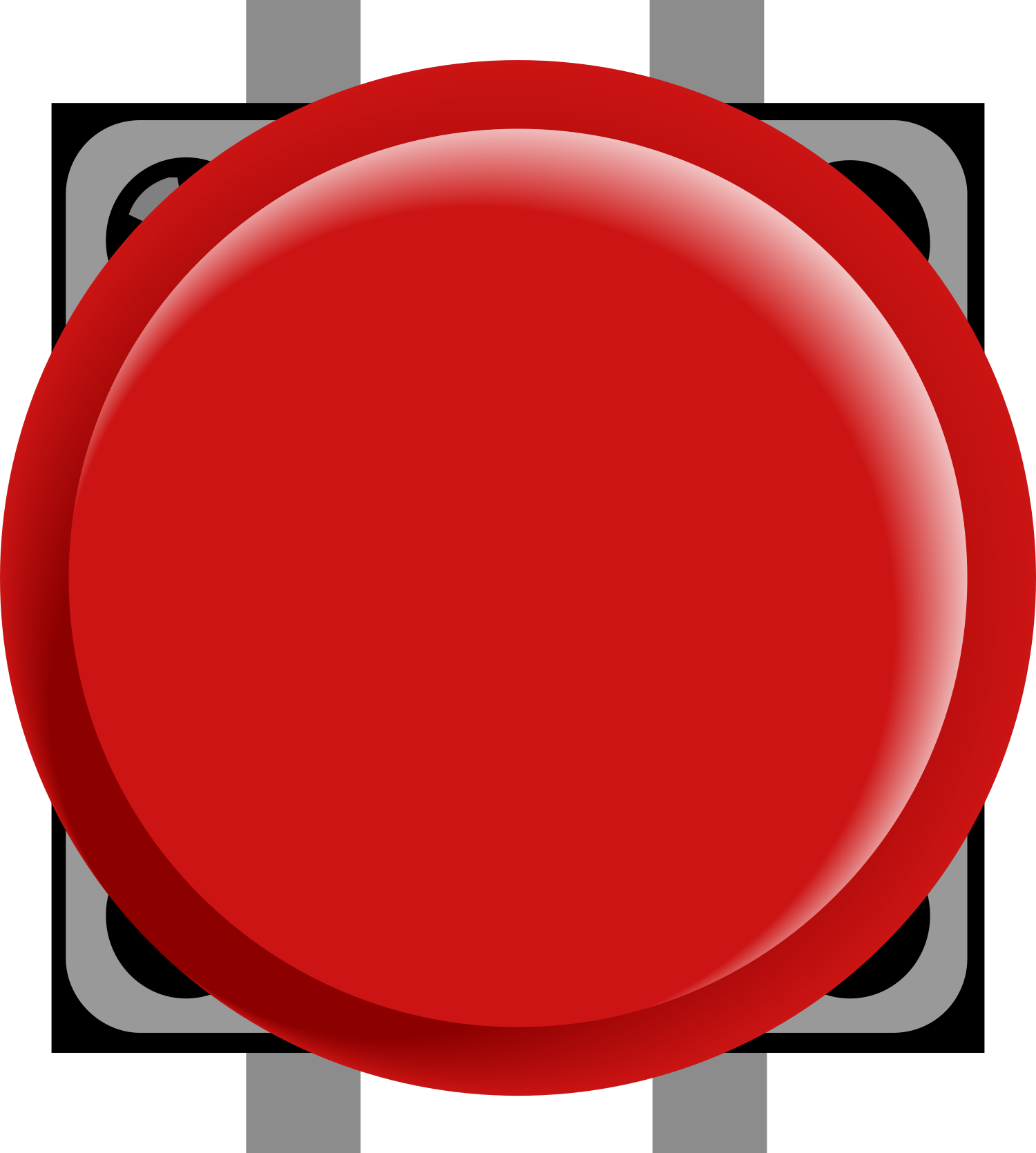
 Design with Pushbutton in Cirkit Designer
Design with Pushbutton in Cirkit DesignerIntroduction
A pushbutton (or push button) is a simple switch mechanism for controlling some aspect of a machine or a process. Buttons are typically made out of hard material, usually plastic or metal. The surface is usually flat or shaped to accommodate the human finger or hand, so as to be easily depressed or pushed. Pushbuttons are most often used to complete an electrical circuit when pressed, allowing current to flow through it, and are released to interrupt the circuit. They are common components in electronic devices, machinery, and various control systems.
Explore Projects Built with Pushbutton
Pushbutton-Controlled Interface with 40-Pin Connector and UBS Power Supply
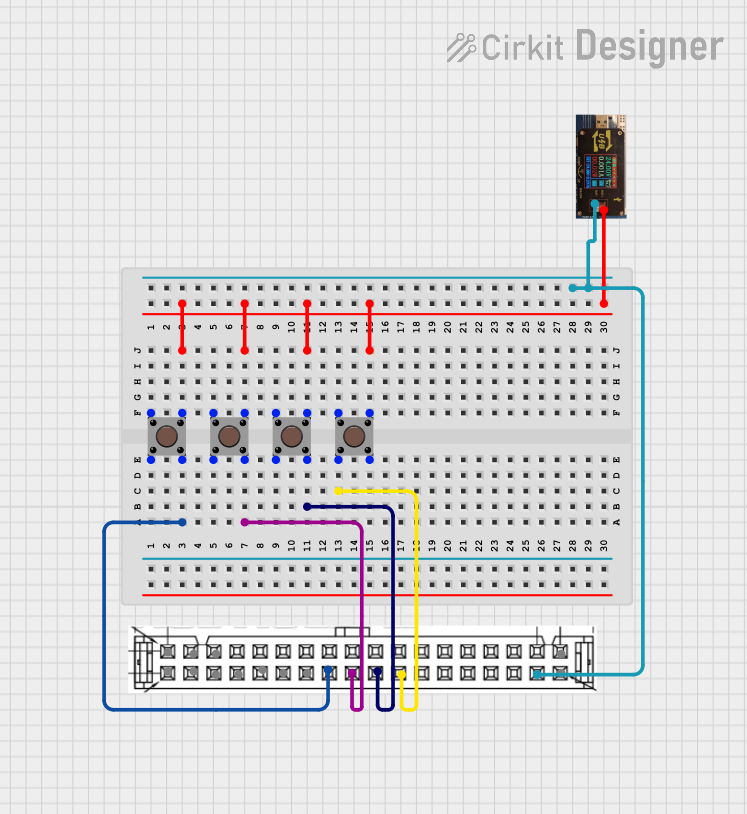
This circuit consists of a 40-pin connector interfacing with four pushbuttons and a UBS power supply. The pushbuttons are used as inputs to the connector, which then relays the signals to other components or systems. The UBS power supply provides the necessary 24V power to the pushbuttons and the common ground for the circuit.
 Open Project in Cirkit Designer
Open Project in Cirkit DesignerParallel Pushbutton Array Powered by 9V Battery
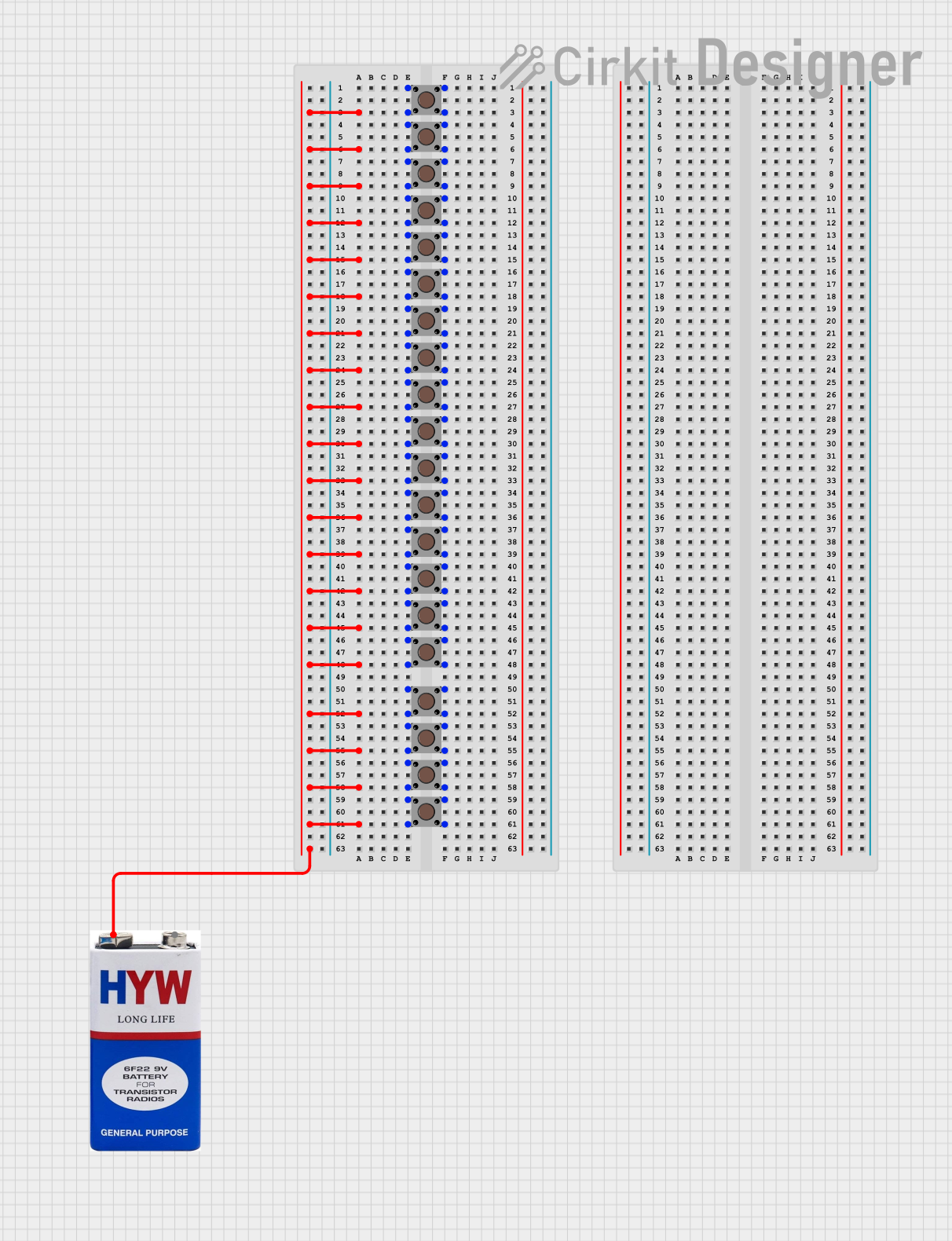
This circuit consists of a series of pushbuttons connected in parallel to a 9V battery. When any pushbutton is pressed, it will complete the circuit, allowing current to flow from the battery through the closed pushbutton. This setup could be used to trigger an event or signal when any one of the pushbuttons is activated.
 Open Project in Cirkit Designer
Open Project in Cirkit DesignerRaspberry Pi 5 Pushbutton Input Circuit
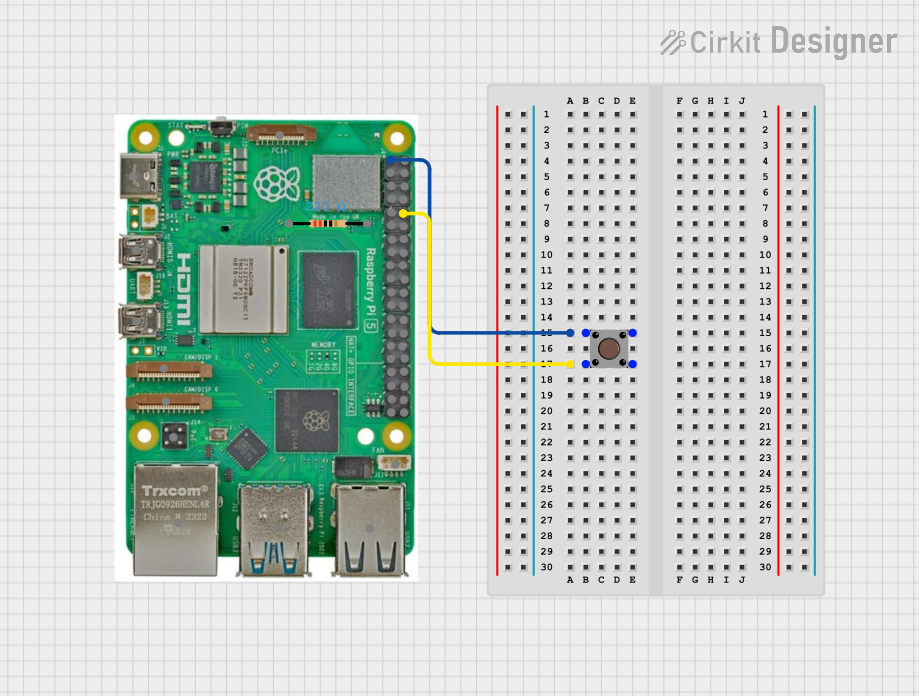
This circuit features a Raspberry Pi 5 connected to a pushbutton. The pushbutton is powered by the 3.3V pin of the Raspberry Pi and its output is connected to GPIO 15, allowing the Raspberry Pi to detect button presses.
 Open Project in Cirkit Designer
Open Project in Cirkit DesignerArduino UNO Pushbutton Input with 10k Ohm Resistor
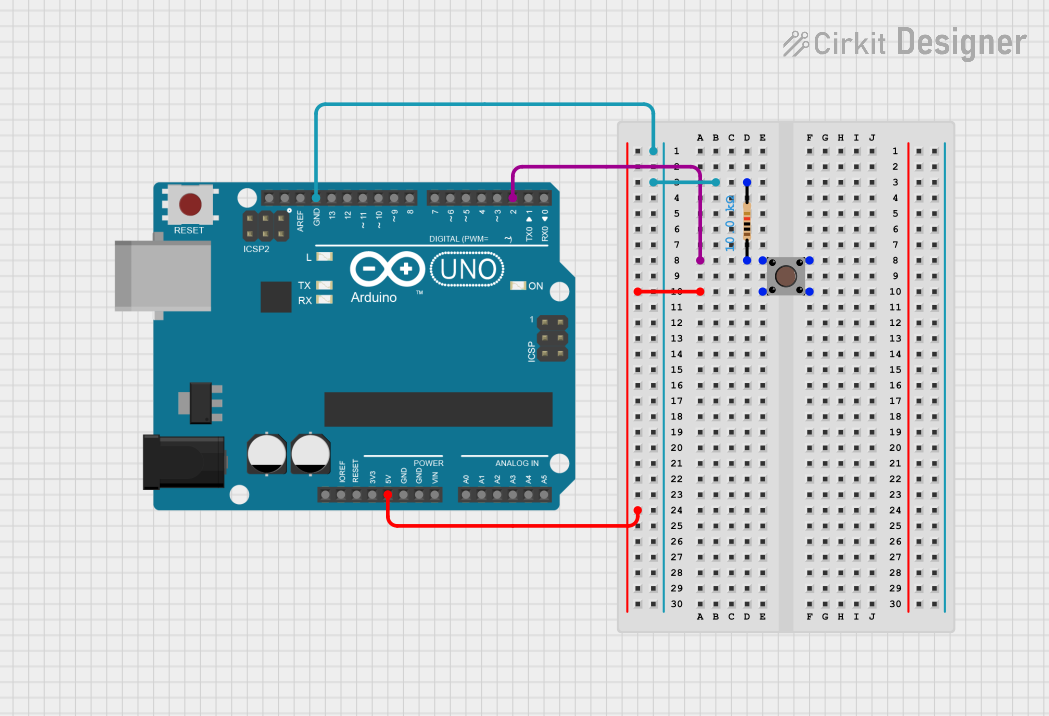
This circuit features an Arduino UNO microcontroller connected to a pushbutton and a 10k Ohm resistor. The pushbutton is powered by the 5V pin of the Arduino, and its state is read through digital pin D2, with the resistor providing a pull-down to ground.
 Open Project in Cirkit Designer
Open Project in Cirkit DesignerExplore Projects Built with Pushbutton

Pushbutton-Controlled Interface with 40-Pin Connector and UBS Power Supply
This circuit consists of a 40-pin connector interfacing with four pushbuttons and a UBS power supply. The pushbuttons are used as inputs to the connector, which then relays the signals to other components or systems. The UBS power supply provides the necessary 24V power to the pushbuttons and the common ground for the circuit.
 Open Project in Cirkit Designer
Open Project in Cirkit Designer
Parallel Pushbutton Array Powered by 9V Battery
This circuit consists of a series of pushbuttons connected in parallel to a 9V battery. When any pushbutton is pressed, it will complete the circuit, allowing current to flow from the battery through the closed pushbutton. This setup could be used to trigger an event or signal when any one of the pushbuttons is activated.
 Open Project in Cirkit Designer
Open Project in Cirkit Designer
Raspberry Pi 5 Pushbutton Input Circuit
This circuit features a Raspberry Pi 5 connected to a pushbutton. The pushbutton is powered by the 3.3V pin of the Raspberry Pi and its output is connected to GPIO 15, allowing the Raspberry Pi to detect button presses.
 Open Project in Cirkit Designer
Open Project in Cirkit Designer
Arduino UNO Pushbutton Input with 10k Ohm Resistor
This circuit features an Arduino UNO microcontroller connected to a pushbutton and a 10k Ohm resistor. The pushbutton is powered by the 5V pin of the Arduino, and its state is read through digital pin D2, with the resistor providing a pull-down to ground.
 Open Project in Cirkit Designer
Open Project in Cirkit DesignerCommon Applications and Use Cases
- User input for interactive devices
- Initiating actions in electronic circuits
- As a reset button in electronic systems
- In control panels for machinery
- In consumer electronics, such as calculators, telephones, and appliances
Technical Specifications
Key Technical Details
- Voltage Rating: Typically 3V to 12V (may vary by model)
- Current Rating: Usually around 10mA to 50mA (may vary by model)
- Contact Type: Momentary or latching
- Durability: Number of cycles (e.g., 100,000 presses)
Pin Configuration and Descriptions
| Pin Number | Description |
|---|---|
| 1 | Normally Open (NO) |
| 2 | Common (COM) |
Usage Instructions
How to Use the Pushbutton in a Circuit
- Identify the Pins: Locate the Normally Open (NO) and Common (COM) pins on the pushbutton.
- Circuit Integration: Connect the COM pin to one side of the power source, and the NO pin to the input you wish to control.
- Pull-down Resistor: It is recommended to use a pull-down resistor (typically 10kΩ) between the input pin and ground to ensure a clear LOW signal when the button is not pressed.
Important Considerations and Best Practices
- Debounce the Button: Mechanical buttons tend to "bounce" when pressed, causing multiple high/low transitions. Implement software debouncing or use a hardware debounce circuit.
- Avoid Exceeding Ratings: Do not exceed the voltage and current ratings of the pushbutton to prevent damage.
- Mount Securely: Ensure the pushbutton is mounted securely to prevent intermittent connections.
Example Code for Arduino UNO
// Define the pin connected to the pushbutton
const int buttonPin = 2;
// Variable for storing the pushbutton status
int buttonState = 0;
void setup() {
// Initialize the pushbutton pin as an input
pinMode(buttonPin, INPUT);
}
void loop(){
// Read the state of the pushbutton value
buttonState = digitalRead(buttonPin);
// Check if the pushbutton is pressed.
// If it is, the buttonState is HIGH:
if (buttonState == HIGH) {
// Turn on the LED
} else {
// Turn off the LED
}
}
Troubleshooting and FAQs
Common Issues Users Might Face
- Button Does Not Respond: Ensure the button is correctly wired and the pull-down resistor is in place.
- Intermittent Responses: Check for loose connections or a faulty button.
- Multiple Signals from a Single Press: Implement debouncing in your code or circuit.
Solutions and Tips for Troubleshooting
- Check Connections: Verify that all connections are secure and correct.
- Test the Button: Use a multimeter to test the continuity of the button when pressed.
- Debounce the Button: Use a software debounce by implementing a delay after detecting a button press or use a hardware debounce circuit.
FAQs
Q: Can I use a pull-up resistor instead of a pull-down?
- A: Yes, you can use a pull-up resistor and connect the other side of the button to ground. The logic in your code will need to be inverted (HIGH means not pressed, LOW means pressed).
Q: How do I know if my button is momentary or latching?
- A: A momentary button will only make contact while being pressed, whereas a latching button will maintain its state until pressed again.
Q: What is the purpose of debouncing a button?
- A: Debouncing is used to ensure that only one signal is registered each time the button is pressed, despite the mechanical bounce that may cause multiple signals.